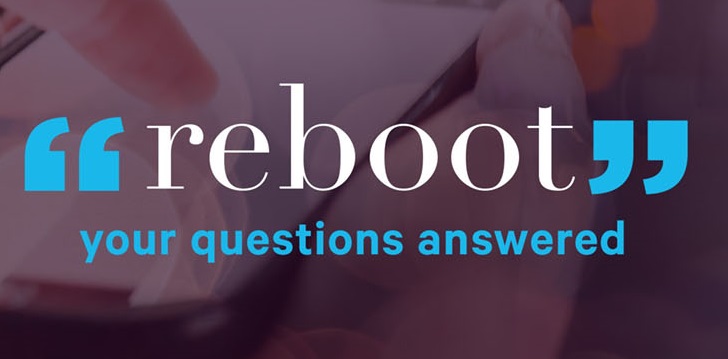
Reputation Reboot addresses real-life online reputation management (ORM) challenges faced by CEOs, executives, VIPs and their organizations. Unless they are public figures, their names and related descriptions of all individuals and companies discussed are changed to protect their privacy. For a quick look at the types of situations facing many professionals, scroll down and check out the headlines.
Can this Wall Street Journal article be buried?
I am an executive with a public relations firm. A client wants us to suppress an old Wall Street Journal article about an insider trading incident that currently appears on the first page of a Google search in the company’s name. Is this possible, and if so how long will it take?
Tread with caution…and don’t make promises you can’t keep. Here’s why. The Wall Street Journal is a very high-ranking online platform. Twenty million readers visit its digital site every month. All those clicks keep it front and center on Google and other search engines.
To lower that article’s ranking you need to create a collection of higher-ranking “assets” (content). For example, if it is the third or fourth entry on a Google page of 10 entries you will need six or seven such assets just to get it off the first page. Then keeping it off is even harder–you will likely see the article resurface periodically on the first page of results. So you might need many more new types of content strategically added over a period of months.
In the meantime, expanding your client’s online profile will help diffuse the impact of that article. Ensure they are using all appropriate social media channels. By building on their strengths using all tools at your disposal you will help counterbalance the potential impact of that article.
Can this social media crisis be overcome?
I am recent college graduate with top honors. I failed to get a job after my prospective employer conducted a Google search of my name. The HR department found negative results related to a thoughtless campus stunt I participated in. It offended students and attracted substantial social media criticism, which appears at the top of search results about me.
One reason that material is at the top of your searches is that you don’t “own” any digital assets that would appear above it, minimizing its impact.
Try this two-step strategy. First, create a personal branding strategy to showcase your achievements and attain high-ranking information that will support you resume and mission. (Our FAQ article provides several examples of how to do that.) Given your career level, it should be a low-key and understated.
Write a short statement acknowledging your error and what you learned from it, including becoming more sensitive to cultural slights. This can be placed on an inside page of your personal branding website to acknowledge and “own” your unintentional error. It can also be used as a point of discussion in future interviews with future employers.
This approach will show you are not trying to conceal your mistake. It also provides an opportunity for demonstrating your ability to learn from an all-too-common lapse of judgement. Given the number of social media crises in today’s world, your experience in navigating this situation could just make you an asset to your future employer.
This tech firm hopes to conceal a sexual harassment lawsuit filing
Recently our technology firm was sued by an employee who claimed sexual harassment by our CEO. We think it is without merit and would like to hide the filing from the first page of our Google results.
We cannot help “bury” it—and exercise caution if other reputation management agencies assure you they can. Here’s why, along with a strategic option that will better position your firm to potentially overcome this issue:
Legal notices published on municipal and other government platforms are very high-ranking: they nearly always appear on the first page of Google. Once they appear, they are often republished on legal blogs—and by some law firms, which report such cases as a way to draw attention to their services (since their firm will come up in any searches of that lawsuit). If it does succeed in being “buried,” it is unlikely to stay off the first page of Google for very long. As the case moves forward, your company will be the focus of media articles which also rank very high.
Consider this strategy
Our advice is to take an alternative route. First, acknowledge the issue. Don’t try to hide it. Prepare a statement by your CEO, if he or she is still at your firm. (If he/she is, has an internal investigation been undertaken to evaluate whether he has a history or reputation for harassment? If so, your company’s board could be liable in a court of law—which could lead to worse online issues.)
Publish the statement on your company’s Facebook page. Included a reference with a link to your website. Next, look at your board. How diverse is it? If women and multicultural directors are not represented on it, consider adding more. Determine how prevalent they are in senior leadership and management roles. Studies show that when women are present on those levels, an organization’s culture often includes less harassment of all types. Should this situation grow into a crisis, their addition will symbolize the organization’s new steps to reboot its culture. Evaluate your HR policies and how they have handled similar complaints in the past. Survey your employees to elicit their concerns. (Survey Monkey has a selection of sexual harassment-related surveys that you can customize for such purposes.)
Transparency demonstrates concern
These steps are examples of transparent actions that, when taken, demonstrate a concern over sexual harassment and steps that are being taken to examine whether your company’s culture has (and does) allow it. By identifying these actions and keeping your employees and shareholders informed of them, you will be in a stronger position to address the lawsuit as well as to improve your online presence. That is because the online conversations about the situation, including your organization’s narrative, will show you are taking steps to investigate and rectify the situation, including the environment that permitted it.
If your CEO has a history of this type of behavior and he/she stays at the company, recognize that it may be a matter of time before more lawsuits are filed and the issue is promoted on blogs and social media. In such a situation, no attempts to “bury” it will work. On the other hand, should he/she take a leave of absence or exit the company, that action not only provides a symbolic example of a new chapter being turned, but may be an optimum time to consider publishing an Op-Ed piece in a national publication or trade magazine about the issue and how your organization has addressed it. It will rank highly online and enable you to take ownership of the story—or at least provide a balanced point of view.
How long should an online reputation management campaign last?
We hired an ORM provider five months ago. Our main concern was that there were four outdated items appearing in our top search results. Three of those items have been dealt with. But the worst is still showing up as the very first result of Google searches. We’ve seen it drop down to the second position. We were told it can take a long time to completely refresh the contents of a page. But our patience is wearing thin.
Many, if not most, online reputation campaigns require six to twelve months to show substantially improved results. (This is our experience as well as that of our colleagues throughout the industry.) A long-term program will be required if the items in question are on major news outlets or other prominent platforms and comprise more than half of the first page of search results. In our experience, six months might address 50% of those issues. If the client owns few “assets” (websites and social media profiles) and has not actively developed an online presence, a year is more realistic. There should be improvements within the first several weeks of the campaign, and the material will continue to shift and change location month by month.
A long-term program of new content generation, accompanied by smart SEO (search engine optimization), will ensure that once material is moved down, it stays there. If a provider promises quick solutions at cheap prices, do they also promise to return and fix any errant material that reappears after their campaign ends? Be sure to ask them how they handle such situations. Otherwise, you may be disappointed in your investment.
Can this defamatory blog post be removed?
I am the subject of a defamatory blog post that has been appearing at the top of my Google search results for over three years. I’ve tried everything, including hiring an ORM firm for several months. I saw some improvement in my search results overall, but that blog post is still at the top. Can you help me?
Our first recommendation is to review the article “What to Do When You Are the Victim of Online Defamation” by David Klein, an attorney specializing in Internet law. He outlines several steps that can help in situations like yours. The first is to review the Terms of Use statement on the site hosting the blog post. If they don’t allow the type of defamatory content you describe you can contact the website’s administrator to request the removal of that post (and that request will have a high likelihood of succeeding).
To protect yourself from ORM issues such as this you need to create a stronger online identity. This means developing digital assets that will prevent third-party content from appearing at the top of searches in your name. There are several essential steps the ORM firm you hired should have taken—but didn’t. (The first would have been to check the blog’s Terms of Use, because the post in question is not simply negative commentary. It makes statements that are clearly both untrue and damaging. The second would have been to refer you to an attorney specializing in such issues.)
As a company leader, you may in the future face similar attempts to cast doubt on your credibility. The best way to prepare is to claim ownership of your name on every appropriate digital platform online and to implement a strong content strategy that presents a factual and compelling narrative about your achievements and leadership position.
How important is social media in an ORM campaign?
I am not active on social media (and due to the type of industry I work in, I’d rather not be). But I’ve been told that social media is key to online reputation management. Is it? Do I have alternatives for moving down old content that comes up when I am Googled?
Social media is one of several tools used in online reputation management. But social media alone is rarely the solution to ORM issues. Nor is it always an effective tool when dealing with “sticky” issues— situations involving substantial amounts of content on high-ranking platforms (such as articles on major media sites and legal notices on government sites).
To displace that type of content from the top Google results you need to publish new content on even higher-ranked platforms, or raise the rank of other content using search engine optimization. Highly ranked content is also more dynamic and tends to resurface, so the results need to be periodically monitored and maintained.
Social media campaigns are effective in countering lower-ranked content and bolstering the online image of brands that don’t have a strong online presence. As a general rule, the less information there is about an individual or organization online, the easier it is for social media content to quickly dominate their search results (this is also a reason why having a weak online presence is dangerous). The more information there is, the less effective a pure social media strategy will be. That is especially true in the case of high-profile figures in business and public life.
Can this online content be suppressed?
Last year, our company experienced a crisis that resulted in dozens of negative articles in the media. Fortunately, it was resolved. But when people Google us one of the main articles continues to show up on the first page of results after a search of our organization’s name. We have utilized first-rate crisis PR and have an online reputation management program in place. But that article hasn’t moved. What can we do to remove it from the top search results?
The crisis was given widespread attention, and the platform hosting this article is very credible. Those are two important reasons why Google has assigned the article a high page rank. Our research also shows the platform is making consistent updates to the article. That has made it even harder to displace. Google values continually updated content. Another contributing factor is the number of backlinks (links from other websites) to the article.
Your first step should be publishing a statement that provides factual information regarding the resolution of the crisis. It can attain a strong page ranking. That will give consumers and journalists researching your company an alternative to the article. Every time they visit, link to or share your statement, it will reinforce and increase its ranking (and that is one less visit, link or share for the article).
Along with the official statement, publish and link to other pages with relevant information on the crisis. As they become recognized as trusted sources of information regarding the issue, they will rise in page ranking. Outside parties will begin referencing and linking to your resources. Be sure and also continue your current ORM program and you should see that article drop off the first page of results.
We are available to develop a strategic plan that has the highest likelihood of succeeding.
An agency in the Middle East has a question
My agency is in the Middle East. We serve VIP clients and their organizations throughout the Gulf region, from Dubai to Qatar and beyond. Many are public figures. Periodically we seek assistance from online reputation management firms to edit their Wikipedia profiles and, in some cases, improve their online reputations. We have been told that in order to improve a client’s reputation, new websites may need to be built. But they don’t need new websites: they already have them, often more than one. How does your agency handle such situations?
Regarding the Wikipedia editing, our history of success results from following Wiki’s rules, which include providing a credible third-party citation for most new entries. If you want to remove information on a Wikipedia page that is linked to an article from a recognized media outlet (whether in the Middle East or the West), that is a change the most experienced Wikipedia editor cannot guarantee. The best way to evaluate the viability of the revisions your client hopes to make is to provide us with a copy of the revised text. We can review it line by line and provide you with an annotated draft showing what is likely to be retained and what is likely to be deleted by Wiki editors. We are available to conduct that work after signing a non-disclosure agreement and working on a consulting basis. Then, with your approval, we will implement the agreed-upon revisions.
A Challenging Question
Your second question is trickier. We specialize in high-profile clients, so are experienced in resolving such issues. The best way to displace unwanted content from the first pages of search results is to create new, higher-ranking content. Often that includes creating specific types of new websites, and if the unwanted content is on prominent or respected media outlets, the new content must be of high quality and part of a long-term strategy. When the client already has a strong online presence, as it seems many of your clients do, sometimes it is possible to work with their existing websites using the techniques of search engine optimization (SEO).
Several Options Available
Which approach to new content you choose depends on the client’s existing online presence and on the nature of the reputation issue they are facing. Our first step is to conduct an audit of clients’ online presence and an analysis of the issue, then present it to clients with recommendations for mitigating reputational damage. We often present several strategies for placing varieties of optimized content online. Then clients can evaluate all their options. Some issues produce strategies that take effect quickly. Other strategies won’t show results for the first three to five months, with up to a year before we see major impact. After that, the work will need to be maintained to keep the old material from resurfacing high on Google. That is the most sophisticated type of ORM, for the most prominent clients and the most high-profile issues.
Did This Client Select the Right ORM Firm?
We recently retained an online reputation provider. They presented us with the most cost-effective program and their work has led to an improvement in our online image. But two issues concern us. The first is that the fee has been increased and extended from the quote in the signed contract. The second is that we feel the provider’s approach is not appropriate for our image. The provider has been publishing new material about our company online. That material isn’t embarrassing, but it isn’t consistent with the way we present our brand. Is our experience fairly typical? Would we have better luck with a different provider?
ORM is an unregulated industry, with providers ranging from individual freelancers to enterprise-level corporations. Business practices vary just as dramatically. But almost all ORM providers share a very similar core approach. What differentiates us is how we how we implement that approach, how we use the tools of ORM. Most every strategy will focus on publishing new content about you online. But the quality of the design and writing will differ. Higher quality materials require more resources to produce, but they can be more effective as ORM tools. Speaking directly to your issue, they also work to enhance your brand (rather than detract from it).
You should insist upon a clause in your contract that allows you to review and approve all materials before they are published online. (That includes reviewing customized URLs, which are often used in ORM campaigns.) Check if the materials you are uncomfortable with can be deleted and replaced with another “asset.”
Does your contract ensure that you have a list of all of the content and platforms that have been set up on your behalf, along with the administrative access codes? It should. Be sure and check whether your contract includes a steep surcharge if your payment is late…and a threat to delete all of the work done to date.
Content Quality Varies Broadly
Often — and with the best intentions — ORM providers will throw dozens of pieces of new content about you online to crowd your unwanted content out of search results. Unless the unwanted content has earned a very high search-engine ranking, the new material can be of low to very low quality and still achieve the core goal. As we write this, thousands of writers around the world are being paid hourly fees to create biographies, articles, press releases, website texts and other materials about clients like you. It can be generic or substantive, high or low quality. You’ll get a good sense of what you can expect by the quality of the provider’s own blogs, information FAQ and social media accounts, including Facebook and Twitter. Look at the photographs of the company leaders and staff. Are you comfortable putting your brand’s management in their hands?
Ultimately, an ORM campaign can provide value in two ways: contributing to your brand capital while also fulfilling its main purpose of repairing or strengthening your online presence. A sudden (and steep) fee increase early in your program raises a red flag, but only you can determine whether you want to continue investing in this program. There are certainly ORM providers who can present your brand in a way you are comfortable with. Our advice is to check with other firms to see how they can build on what has been done so far.
University aide seeks reputation protection during campus rape crisis
I am an administrator at one of the universities being investigated by the Department of Education for Title IX violations. (It is one of the universities featured in the documentary film The Hunting Ground.) As our institution becomes the focus of activist attacks, I am concerned about the impact on my own reputation— specifically, from becoming the focus of student protests. My position requires me to consider the university’s reputation as the highest priority, including protecting it from the reputational damage that can result from recognizing sexual assault claims and preventing any false claims from moving forward.
The crisis facing many universities today is similar to the one many companies faced during early Internet years. Before mainstream (and smaller) organizations established online forums and social media platforms dedicated to monitoring and responding to consumer concerns, complaints and frustrations, consumers who failed to receive the help they sought would go elsewhere to raise attention to their issues. They would build their own communities of support. Those communities would produce a viral tidal wave of anger and criticism toward the organization.
We have written about this dynamic extensively: a few examples include the famous 2005 “Dell Sucks” incident, which led to the company transforming its customer service solutions. Carnival Cruiselines’ 2013 crisis is a well-known example, as is the Bank of America debacle, where a young woman angry at BoA’s fee increase launched a change.org petition that ended up on the national news…and quickly resulted in a BoA policy change.
Sexual assault far graver than consumer complaints
Sexual assault is an issue of much greater gravity than consumer complaints. We do not mean to imply otherwise. But universities are now the focus of activists who are forming well-organized groups to share information, report assaults and hold press conferences to bring visibility to this issue—creating for themselves all the resources that universities have failed to provide them. With CNN’s recent airing of The Hunting Ground, the crisis has reached a new level.
If your university isn’t working to build new support systems for victims you are indeed in a difficult position. As an administrator facilitating the university’s communications on this topic, your comments to victims may be published on blogs, quoted to the media or videotaped (without your knowledge) and posted on YouTube. Those are all tactics that activists and frustrated citizens employ when their efforts to gain a fair hearing through traditional channels fail.
Compassion and empathy can’t change policies
If you can’t make substantive policy changes at your university, you can address victims with compassion. Empathy and emotional support are not a substitute for real support systems, but they can build bridges of trust. Expressing them as much as is appropriate within your role will help you become known as part of the solution, caught in a difficult web of bureaucracy that will, we hope, one day serve students better.
MBA candidate wants a competitive edge in job market
I’m an MBA candidate preparing to reenter the job market. What is your advice for positioning myself as the ideal candidate? I worked in my field for three years before returning to school and want to impress prospective employers with the value I can provide them. They will all be Googling me before we meet.
To make the strongest impression, establish a blog that focuses on your targeted industry, with a complementary Twitter or Instagram feed. Commit to a consistent posting schedule: at minimum, one post every week (try for two or three).
Follow media commentary on the companies, influencers and journalists who lead your industry, as well as the top stories in related fields.
Create a Content Plan….and Bring a Fresh Angle to the Discussion
Draw upon the most-discussed news, trends, products and services, but create a content plan that ensures you bring a fresh perspective to the discussion. Then begin posting regularly. Shoot for three a week: one featuring your own commentary, another that republishes someone else’s and a final post in which you highlight the top news stories of the week and analyze their significance.
Republish one post a week through your LinkedIn profile (more than that could be overkill) and use your other social media channels to amplify its distribution. But don’t use social media only as a tool for self-promotion. Use it mainly as a way to highlight and share the tweets or posts of others. Shining your social media spotlight on everyone else is the best way to raise your own profile in an authentic and generous way.
Include a link to your blog in your email signature so prospective employers, as well as your colleagues and other contacts, will know about it. As a demonstration of your knowledge of your industry, and of your digital expertise, it will serve you well in your job search. It will definitely differentiate yourself from your peers…and for some it can turn into a major asset in their long-term career development.
Help sought for burying legal notices
I am the COO of a privately held firm. Four years ago we were involved in a lawsuit. Documents pertaining to that case are still showing up prominently in search results—the Notice of Hearing appears directly below our company website. I understand it can’t be removed entirely, but that it can be relegated further down in search results. How quickly could you do that?
Legal notices are difficult to dislodge because they are on high-ranking sites and often have been aggregated by legal websites and linked to from blogs. If they have also been referenced in business articles, they are even more deeply embedded online. And the longer they have stayed there, the harder they will be to move. Longevity is a factor Google (and other search engines) consider when determining page rank. Another factor is the credibility of sites hosting the content. Of the many sites hosting those documents, you’ll likely see government-run sites at the top. (They are considered to be very credible.)
We have been effective at displacing those types of documents, moving them to page 2 (and lower) in search results. This comprehensive strategic program takes a minimum of six months to implement, and usually must be continued for several more. That is the case for most online reputation management campaigns dealing with highly ranked material. Simply putting new content online won’t make a dent in the location of massive sites like the ones that publish legal notices. The key is the optimization of the new content. Raising it to the top of search results is a process—as are the steps necessary to force down the notices.
So if you are contemplating such a campaign, understand that there are no short cuts. At a certain level, such as if the notice is for a federal indictment, it may even be beyond what ORM can handle. In that case, a full rebranding may be in order.
New CEO needs image appealing to investors
I’m a 29-year-old male and the CEO of a new company. I’m preparing to approach investors and I’d like to project a more mature image online. (I’m not in the tech industry, so the old images of me wearing T-shirts and jeans will not help my work with bankers.)
Those photos have been online long enough that they have been aggregated by many sites and they now fully populate your Google results. The solution is to take a variety of new photos and then post them intelligently but broadly. Try a range of garments, from power suits to open shirt collars and blue blazers (and, yes, even jeans). Tag them and publish them in all of your profiles. Start integrating that style into your wardrobe, too, so it will become an authentic part of your image
Then take it a step further and have a professional-quality video made to introduce yourself to potential investors (or to introduce your company and its strengths). Not only are videos a compelling way to communicate your passion, expertise and vision, they also rank very highly on search engines. If it is appropriate, set up a YouTube platform for this purpose. That will help ensure it appears near the top of Google search results. If you prefer less widespread exposure, host it on Vimeo and embed it onto your website, LinkedIn profile and other appropriate sites.
Before the cameras roll consult a media trainer to help you shape your message and the way you deliver it. That’s what many CEOs who’ve succeeded in raising capital have done…and it’s why they look so good on TV. We’d be happy to recommend several excellent image consultants.
Executive aims to minimize age discrimination
I am a mature female executive with over 20 years experience in the corporate world. I am preparing to search for a new position at a new company. How should I update my online profile so it is as competitive as possible — and helps me avoid the possibility of age discrimination?
The Internet presents many opportunities to update your image and showcase your skills. Take a three-prong approach: update your online profiles, have new headshots taken and implement a content strategy that will help distinguish you from other candidates.
Start with your online profiles. Make sure your LinkedIn profile conveys your strengths and professional achievements. Potential employers will Google your name, and your LinkedIn profile will show up close to the top of those searches. Ensure you have a well-thought out profile on Google+, too, and on other appropriate platforms.
Next, your mindset
Once you’ve polished your professional profile and made it easily accessible, it is time to look at your physical image. We checked in with style strategist Margo Hason, a certified professional member of the Association of Image Consultants International (AICI), to elicit her advice.“Check your mindset,” she advised. “Dress and groom yourself to make age irrelevant and change your mindset to “age is irrelevant.”
“Two weeks before a headshot appointment meet with your hairstylist to discuss what hairstyle will work best in a photo shoot. Use your cell phone camera to test how it looks in a photo. Then meet with a makeup artist a week before the photo shoot. Make an appointment with your hairstylist and makeup artist for the day of the photo shoot. Or if the photographer’s studio will be supplying those services, bring the test photos from your sessions with both.
How do you want to be seen?
“Determine how you want to be seen,” she added. “If you want to appear in the photo as “professionally approachable” wear textured fabric and a flattering color—for example, a knit top or jacket. If you want to appear as a “professional in authority” or as an expert, wear a structured jacket with smooth fabric and darker in color. It does not have to be black. Select a dark color that flatters you: a dark blue, burgundy or green. Bring several garment options to the photo shoot. Test to see which colors flatter you with the lighting available. Natural light can be softer, and more flattering.
“Ask to see the photos during the session. Make sure your face is well lit, your eyes are shining and animated and that you have a natural smile. It can take practice. Keep taking photos and practicing the communication with your eyes and smile. It’s not your age that matters. It’s all about letting your personality and professionalism shine.” For additional tips on updating your image, check out Forever Cool: How to Achieve Ageless, Youthful and Modern Personal Style, by Sherrie Mathieson.
Have the photographer take several shots in each outfit, using different poses. This will produce a variety of photographs that you can publish on a variety of personal profiles. Put the best one on LinkedIn and the others on any other online profiles you may have, including alumni and professional organizations. If you have a professional bio at work, put one there. You want to have many current portraits online. They will displace old images and images you don’t control.
Your content strategy
If you are not already publishing a blog or articles online, seriously consider developing a content strategy. Content creation and social media use are highly valued skills in virtually every industry today. Your articles or blog can also showcase your knowledge and experience in your industry. Whether you publish on sites like Medium, on an industry trade magazine’s site or on a blog they will show up in the top results for a search of your name.
Maintain a Twitter account and use it for professional, rather than personal, topics. Follow Twitter feeds by journalists and experts in your field, as well as your peers. Platforms like Hootsuite allow you to follow all tweets related to a specific topic and help you manage your own social media account. Commit to it long term and post new content consistently. A content strategy that engages multiple digital platforms will be the most impressive to prospective employers. If it seems overwhelming, outsource both the writing and social media. There are plenty of writers available wherever you live who will work within your budget.
Can this businessman become invisible online?
I have a prominent background in the business world. There is considerable information about me online. None of it is negative. But it no longer reflects my lifestyle and I would like to suppress it. I’ve spoken with online reputation management firms and have been told they will need to create a lot of new content about me in order to move it off of the first two pages of Google. However, I prefer to be as private as possible and would rather have nothing there. Is that possible?
Unfortunately, it is necessary to add new content to supplant the old information. There is no way around that. But there is a way to do it with minimal impact on your privacy. The secret is to prepare a content plan that takes up the most space while saying the least about you. Because of your high profile, it should be as elegant as it is understated.
This strategy should be customized, with copy, design and an overall plan that is created specifically for you. The company you work with cannot fall back on templates, and you should be involved in every step, including knowing what will be published about you, and where and when it will be published. Often ORM campaigns involve publishing dozens of generic-looking profiles with brief bios and headshots on innumerable social media and other digital sites. This works for many people and can be inexpensive. But it is not the best or most appropriate strategy for a client like you. So when you interview firms, ask who will be creating your strategy, what their review and approval process is and whether they will inform you what platforms your information will be published on before it goes live.
Employee reviews are a concern online and off
As an HR executive in a high-profile company, I’m concerned about the employee reviews that appear about it online. The firm is continuing to win multi-million dollar contracts with many, so the reviews don’t seem to be affecting business. But they send a bad signal about the company. Most comments date back to the firm’s previous management. But prospective employees and clients who read them don’t know that. What actions can we take?
It sounds like the company does not have a system in place for collecting and publishing employee reviews. They should. There are a number of ethical ways to do so. Once a company begins eliciting them, more positive ones can be republished and amplified on a variety of social media channels, contributing to a more well-balanced view of its organization.
Understand that neither review management systems nor online reputation management can make negative employee reviews disappear. Most of the sites where they appear (most notably Glassdoor) are “super sites” — huge platforms that cannot be magically transported to the bottom depths of Google.
We have seen Glassdoor reviews appear less prominently on searches (on the second or third pages of results) when companies have an extensive online presence. That means they own and are discussed on many high-ranking sites. So expanding your firm’s online presence can also be an effective strategy. Online reputation management can help with that.
Additional tips
Showcase the best aspects of your company’s culture on your company’s website. That’s where prospective employees, board members and shareholders will research it. Some tips:
- Use real photographs of your office and employees at work.
- Create a new section for a series of videos of employees discussing their experiences at the company and what new employees can expect. Explore the feasibility of inviting successful alumni to comment on how their experience with the company helped them land where they are.
- If your office is located in an appealing area, include descriptions and footage of the surrounding area, from cafés and parks to transportation hubs.
Caveat
Realize that employee reviews, like all online reviews, are subjective. Unhappy employees are far more likely to publish reviews than satisfied ones. So are employees who have been dismissed. Experts say that initiating a monthly and quarterly employee survey to elicit their feedback can help you establish a better company culture. In the long term, that may contribute to more positive reviews.
Nude photographs of an executive surface online
I am a risk and compliance director at a publicly traded company. A few days ago a longtime senior executive (who is married) confided to me that his private laptop was hacked during a recent trip to Europe. Nude photographs of him (and especially compromising ones at that) were on the laptop and have been published online. I have since learned that the photographs are selfies and are being posted in a variety of sites. Our company’s quarterly earnings report will be released next week. Today one of the images was posted with his name—and our company name. So far, these haven’t risen higher than the fifth page of results in Google searches of our company. But I’m concerned that we will soon see them on page one.
This issue requires triage on four fronts: legal, IT, PR and risk and compliance. First, dedicate a team to tracking the publication of the images and contacting the webmasters of each site to request their removal. Most major sites have a “Terms of Use” clause in fine print (usually located at the bottom of their home page). The publication of the photos will break those rules in many but not all cases.
Next, contact Google’s Request Remove Content page. Google will remove from search results photographs that have been posted without the knowledge and consent of subjects. If webmasters will not remove the material, file a request with Google for each one.
Check with Legal: Does Your Company Have a Social Media Policy?
At the onset of this process, review your company’s social media policy to determine if it addresses this type of issue. According to attorney Scott L. Vernick, only 50% of corporations have social media policies in place at all. Check and see if HR has a system for assisting employees who find themselves in such a position. Consider educating your employees about digital security and privacy risks. In the meantime, your security department should debrief the executive to determine whether the identity of the likely source behind the postings is known. If so, your legal department can evaluate appropriate actions (if any are possible). Cyber forensics can often determine the source of the material. If that is an option you want to pursue, attorney David O. Klein is an expert in Internet and technology law.
Have a question you would like addressed? Post it in the comments section below. We can’t respond to all inquiries but will consider questions relevant to the focus of this column. To gain more insight into online reputation management, read our most popular article: The Essentials: Online Reputation Management FAQs for Everyone.
Is this online reputation management pitch legitimate?
An online reputation management firm contacted me with a pitch to create copyrighted content about me online. It would then then sue platforms that have written about me, forcing them to remove the information from their websites. The claim would be that they published copyrighted content without permission. Is this legitimate? They want to be paid up front with no guarantees.
Buyer beware. This sounds like a ploy that was featured in a Wall Street Journal investigative report on May 15, 2020, “Google Hides News, Tricked by Fake Claims.” It’s behind a paywall, so here are key passages:
“The Journal identified hundreds of instances in which individuals or companies, often using apparently fake identities, caused the Alphabet Inc. unit to remove links to unfavorable articles and blog posts that alleged wrongdoing by convicted criminals, foreign officials and businesspeople in the U.S. and abroad.
“Google took them down in response to copyright complaints, many of which appear to be bogus, the Journal found in an analysis of information from the more than four billion links sent to Google for removal since 2011.
“Yet some requests, the Journal found, appear to be from people manipulating the system in ways it didn’t intend, resulting in Google’s taking down lawful content.
One man “sent Google a series of copyright claims against blogs and a law-firm website that discussed his case, claiming they had copied the posts” from his website. “That wasn’t true, the Journal determined, but Google erased the pages from its search engine anyway.”
After the Journal informed Google of its findings, Google restored more than 52,000 links it had removed and “identified more than 100 new abusive submitters.”
Meaning all the people who paid for that fake removal tactic, lost both their money and their results.








